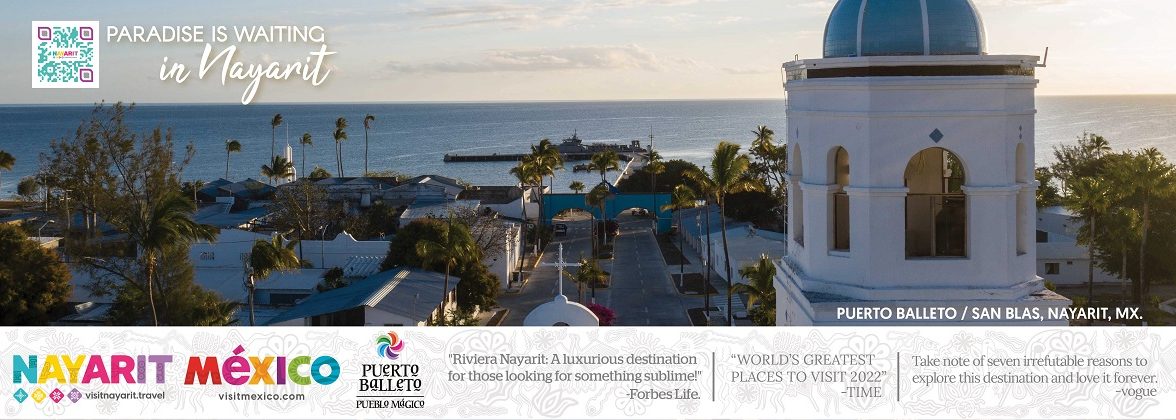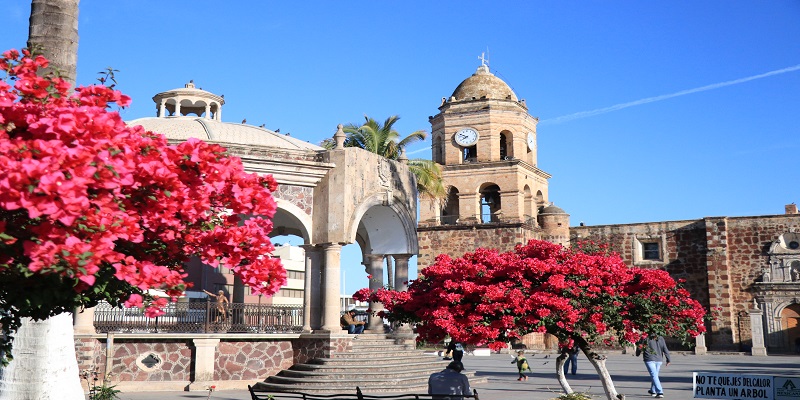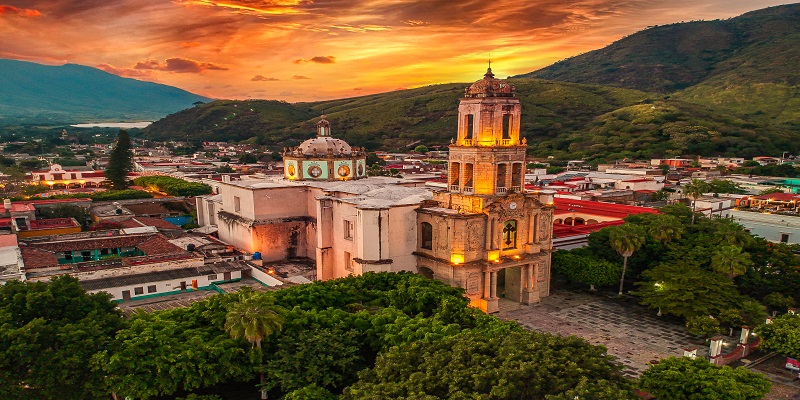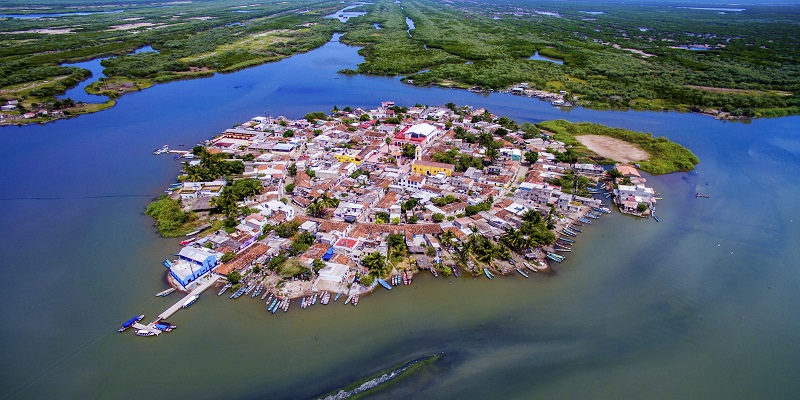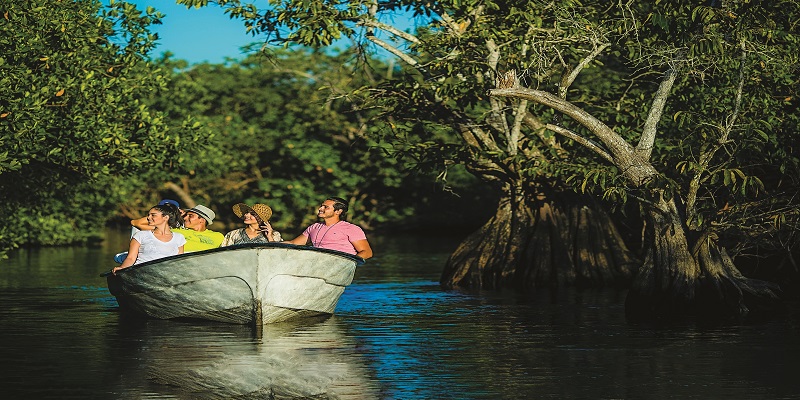Tepic, Nay., Mexico — Mexico’s State of Nayarit was already blessed with four rich and vibrant Magical Towns. But this year Mexico’s Federal Ministry of Tourism (SECTUR) added five new ones to the list, bringing the total to nine Magical Towns in the state. The new towns include Ahuacatlán, Amatlán de Cañas, Ixtlán del Río, San Blas, and Puerto Balleto (Islas Marías), which join the ranks with veteran Magical Towns Sayulita, Compostela, Jala, and Mexcaltitlan.
The Magical Towns of Mexico, or Pueblos Magicos, is a government-granted designation given to towns or villages in Mexico that best exemplify aspects of culture, history, tradition, art, food, nature, and beyond. These recognized places have something unique to them that helps to tell the story of the soul of Mexico. Nayarit has more Magical Towns than any other state in Mexico.
Long a hotspot for bird watchers and nature enthusiasts along the Riviera Nayarit, San Blas is a Pacific Coast jewel. The sleepy seaside community is along the northern coast of the state, featuring four miles of fine sand beaches. San Blas is rich in natural beauty, from its navigable canals and mangrove forests to the small islands offshore that welcome more than 300 migratory bird species every year.
San Blas dates back to the 17th century when it was developed as a shipyard and departure point for the Spanish Crown. It was here that the first maritime customs house on the Pacific was established. Today, visitors can tour the Contaduria stronghold, as well as the ruins of the Nuestra Señora del Rosario Temple.
San Blas is also the jumping-off point from which to explore another new Magical Town — Puerto Balleto. Puerto Balleto is the gateway to Nayarit’s Islas Marias, a former prison colony turned center for tourism and wildlife viewing. In the early 20th century, Islas Marias were developed as the Islas Marias Federal Penal Colony. The prison remained in use until 2019 when it closed and the land was turned over to be rehabilitated into a place for recreation. The islands include Maria Madre, Maria Magdalena, Maria Cleofas, and San Juanito. Today the group of islands is considered a UNESCO Biosphere Reserve to protect the more than 1,500 species of flora and fauna.
To access Islas Marias, visitors take a ferry from San Blas to Puerto Balleto on Isla Maria Madres. Puerto Balleto is where visitors will find accommodations for Islas Marias, as well as the Plaza Juarez, which is the town center home to the Guadalupe Temple and the Muros de Agua Jose Revueltas Auditorium. The auditorium is plastered with murals created by the former prisoners. The island is a haven for outdoor adventure, as well, from hiking and biking to bird watching.
Heading south in Nayarit, Amatlán de Cañas is another Magical Town that is deeply rooted in history. Its name comes from Nahuatl, meaning “place where Amate y Papel trees abound.” Later, the word cañas was added due to the sugar cane industry in the region. Today, visitors to Amatlán de Cañas will find historic cobblestone streets, adobe homes with red-tile roofs, and a community steeped in history, culture, and tradition.
Amatlán de Cañas is known for its Temple of Jesus Nazareno in the Centro Historico, a church built in the 18th century. The Municipal Palace is another important building that visitors will find in the Centro Historico. Amatlán de Cañas is also known for the bubbling natural hot springs in the surrounding mountains. Foodies can sample the rich and flavorful local delicacies, like lamb birria, tamales, and various locally made sweets.
Located up in the mountains at more than 3,000 feet above sea level, Ahuacatlán also takes its name from the Nahuatl words that translate to “the place with avocados.” Today the community is still known for its agricultural industries, including avocado, sugarcane, and maize. It’s also known for its tequila production.
About an hour outside of Nayarit’s capital, Tepic, Ixtlán del Río is a gateway to pre-Hispanic Mexico, thanks to its proximity to Los Toriles, an important archaeological site in the region. In fact, Los Toriles is the only pre-Hispanic archaeological zone in the state of Nayarit. It features 93 mounds, as well as a series of gorgeous petroglyphs.
But visitors do not have to leave Ixtlán del Río in order to absorb its history. Its famous La Casa de Cultura Museum has exhibition rooms dedicated to archaeology, paintings, and photography. One of the standout features of Ixtlán del Río is the Cerrito de Cristo Rey, the Hill of Christ the King, a scenic viewpoint with a massive white statue of Christ overlooking the city.
In order to bring awareness to the newest Magical Towns in the state, the tourism minister has announced a new Magical Towns corridor in the southern part of Nayarit, creating a new tourism route across Jala, Ixtlan del Rio, Ahuacatlan, Compostela, and Amatlan de Cañas. This will bring travelers to five of Nayarit’s Magical Towns, both its newest and longer established ones, and foster the opportunity for new businesses to emerge, from dining options, entertainment venues, and museums to transportation services, healthcare facilities, and beyond.

